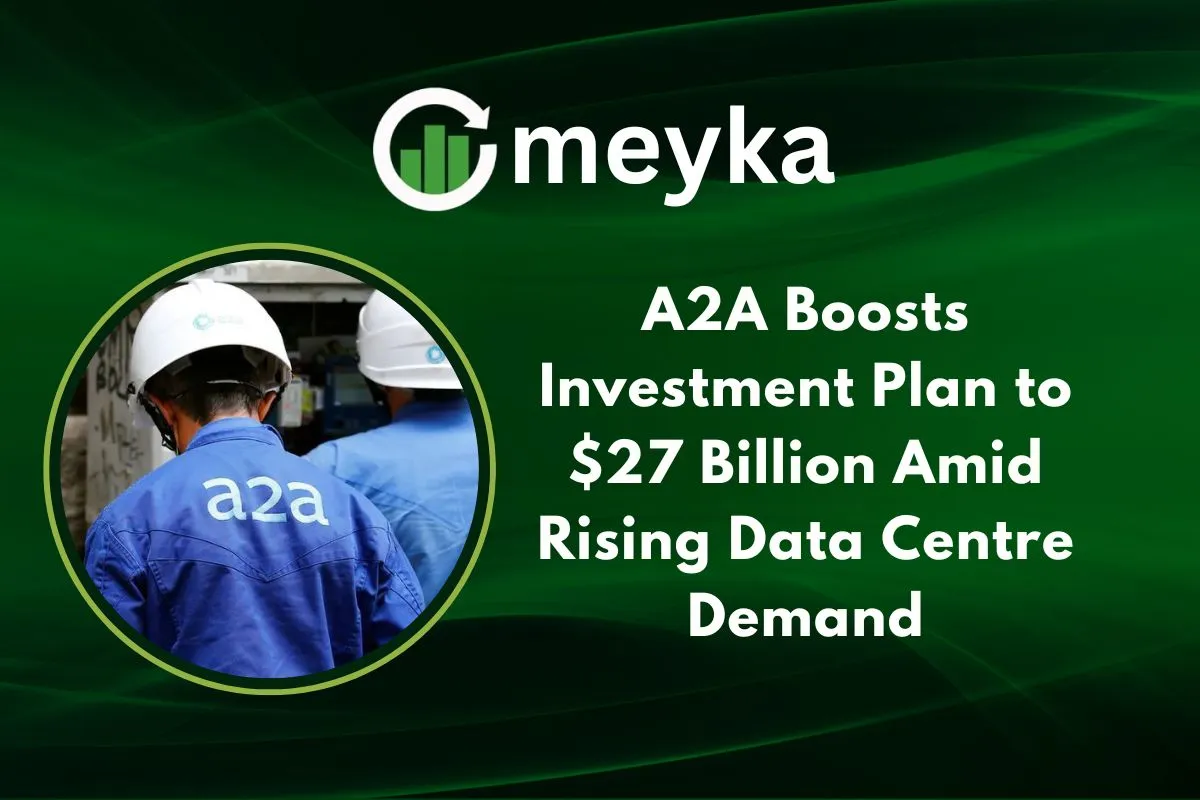A2A Boosts Investment Plan to $27 Billion Amid Rising Data Centre Demand
We are witnessing a major shift in how our digital world is built. The Italian energy group A2A has responded by raising its investment plan to €23 billion (about US $27 billion) for the period 2024-2035. This move is driven by rapidly growing demand for data centres, the buildings that house servers, cables, and cooling systems to power our internet, cloud, and AI services. We will explain why A2A is doing this, how it ties into the world of data centres, and what it means for the energy and digital future of Europe.
What Is A2A?
A2A is a major Italian multi-utility firm. The company works in electricity distribution, renewable energy, waste-to-energy, and energy networks. It plays a key role in the region of Lombardy, which includes Milan and Brescia. Because of its infrastructure and regional presence, A2A is well placed to partner with data centre operators who need large amounts of electricity and reliable networks.
Overview of the Updated Investment Plan
A2A’s updated plan spans from 2024 to 2035 and lifts its total investment to around €23 billion (≈ US $27 billion). From this total, around €1.6 billion is specifically earmarked for building and managing data centres.
Major areas of investment include:
- Renewable energy generation (solar, wind)
- Smart and high-voltage electric grids
- Data-centre infrastructure and related cooling/heat-reuse systems
- Waste-to-energy and circular-economy projects
Why A2A Is Prioritizing Data Centres
There are several clear reasons why data centres are a big focus:
- The demand for cloud computing and artificial intelligence is rising fast.
- Europe is pushing for more domestic digital infrastructure so that data is stored and managed locally.
- In Lombardy (northern Italy), data-centre capacity is expected to rise tenfold over the next five years.
- Data centres consume very large amounts of power. A2A sees a business opportunity in supplying and managing that power.
The Link Between Data Centres and Energy Transition
Data centres are not just about servers and network racks. They are massive energy consumers. They also often generate a lot of heat. So, the link to energy and sustainability is strong. For example,2A in Brescia has launched a liquid-cooled data centre that recovers waste heat and feeds it into the district heating network, reducing CO₂ emissions and making use of what would otherwise be waste.
In short: The data centre boom requires clean power, efficient grids, smart cooling, and heat-reuse systems. A2A aims to meet these needs while advancing its green plans.
Key Projects & Expansion Areas
Here are some of the expansion details:
- Around Milan, data-centre capacity is set to add approximately 2 GW over the next five years (from ~0.2 GW now) in an atenfold growth.
- A2A’s infrastructure (high-voltage grid, network distribution) in Lombardy is being upgraded to serve these demands.
- The Brescia facility with liquid cooling recovers heat up to 65°C and supplies it to homes via district heating.
- The plan links renewable generation to data-centre power needs and also involves energy storage and network upgrades.
Market Drivers: What’s Fueling the Boom?
Several factors drive this surge:
- The rise of AI, big data, and cloud services means more data centres.
- Companies and governments want resilient and local digital infrastructures.
- Europe is making policies to increase digital capacity and sustainability.
- On the supply side, firms like A2A see the chance to link energy transition (clean power, smart grids) with data infrastructure growth.
Potential Economic Impact
We expect several positive outcomes:
- The Italian economy benefits from investment, jobs in energy, tech, and construction.
- A2A strengthens its role as a key player in Europe’s digital-energy infrastructure.
- Because data centres power many industries (finance, cloud, AI), strong infrastructure makes the region more competitive.
- Jobs will be created not only in construction but also in ongoing operations (data-centre cooling, energy management, waste heat reuse).
Challenges & Risks
Of course, there are risks too:
- Data centres use huge amounts of electricity; if power supply or grid capacity lags, bottlenecks appear. For example, Italy must upgrade its grid to meet the projected demand.
- Energy cost differences still matter; Italy has relatively high electricity costs, which can make it less competitive unless offset by renewable power or long-term contracts.
- Regulatory and environmental issues (such as cooling, heat reuse, and water use) must be managed carefully.
- There is competition across Europe for data-centre capacity; other countries may offer incentives, cheaper land, or power.
Future Outlook
Looking ahead, here is what we can expect:
- A2A’s boosted investment positions it well for the next decade of digital-energy growth.
- The data-centre market in Europe looks set to continue expanding, especially where energy supply and sustainability align.
- We may see even more integration: data centres not only storing data but also supplying heat to homes, linking with renewables, using wasteheatt etc.
- The keyword “data centre” will increasingly tie into energy strategy, green power, er and smart infrastructure, not just IT.
Conclusion
In summary: A2A is making a bold choice. By raising its investment plan to $27 billion, it is embracing the rise of data centres and the link between digital infrastructure and clean energy. We from the digital-and-energy world are watching this closely, because the future of the “data centre” is not just about servers. It’s also about grids, heat reuse, renewables, and regions ready for the next wave of tech. This move by A2A signals that those intersections matter, and that building the digital future means building the energy future too.
FAQS
Demand is high because people and businesses use more cloud storage, streaming, AI, and online services. Data centers store and process all this digital information quickly and safely.
Big tech companies like Google, Microsoft, Amazon, and Meta are investing in AI data centers. They need powerful servers to run artificial intelligence and support cloud services worldwide.
The rise of AI and large-scale cloud computing is expected to drive data center power demand up to 160%, as servers need more electricity to handle complex workloads.
Disclaimer:
The content shared by Meyka AI PTY LTD is solely for research and informational purposes. Meyka is not a financial advisory service, and the information provided should not be considered investment or trading advice.






